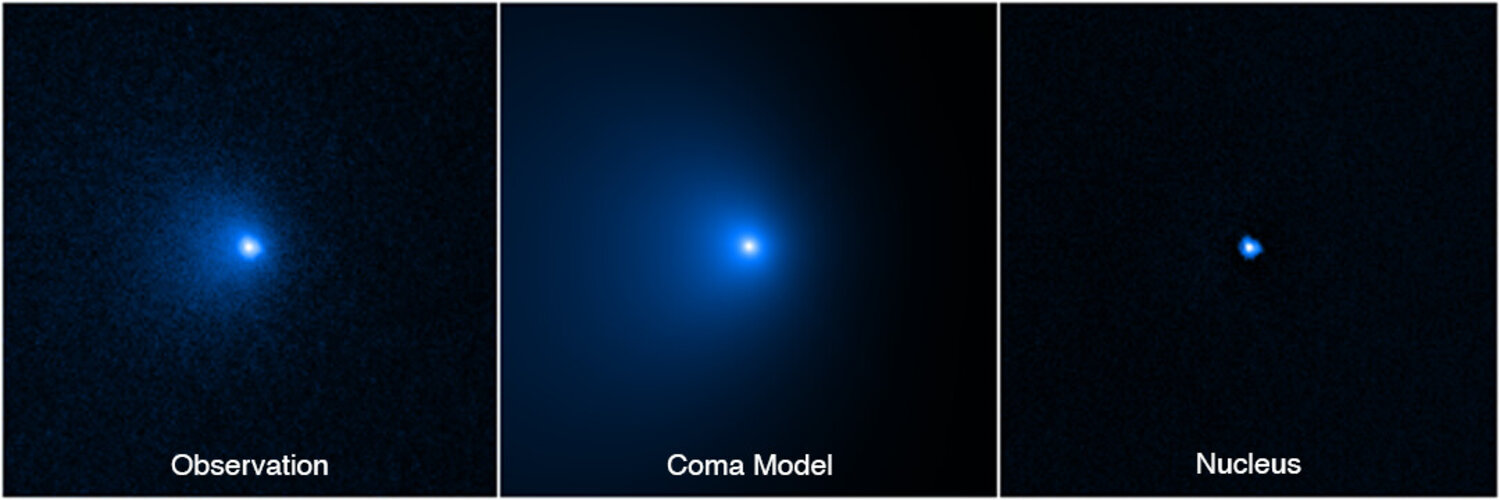The NASA/ESA Hubble Space Telescope has determined the size of the largest icy comet nucleus ever seen by astronomers.
This image sequence shows how the nucleus of Comet C/2014 UN271 (Bernardinelli-Bernstein) was isolated from a vast shell of dust and gas surrounding the solid icy nucleus. On the left is a photo of the comet taken by the NASA/ESA Hubble Space Telescope's Wide Field Camera 3 on 8 January 2022. A model of the coma (middle panel) was obtained by means of fitting the surface brightness profile assembled from the observed image on the left. This allowed for the coma to be subtracted, unveiling the point-like glow from the nucleus. Combined with radio telescope data, astronomers arrived at a precise measurement of the nucleus size. That's no small feat from something roughly 4.8 billion kilometres away. Though the nucleus is estimated to be as large as 135 kilometres across, it is so far away it cannot be resolved by Hubble. Its size is derived from its reflectivity as measured by Hubble. The nucleus is estimated to be as black as charcoal. The nucleus area is gleaned from radio observations.



 Image:
Hubble confirms largest comet nucleus ever seen
Image:
Hubble confirms largest comet nucleus ever seen